Microsoft Office 2016 Review: Top 25 Most Important Features
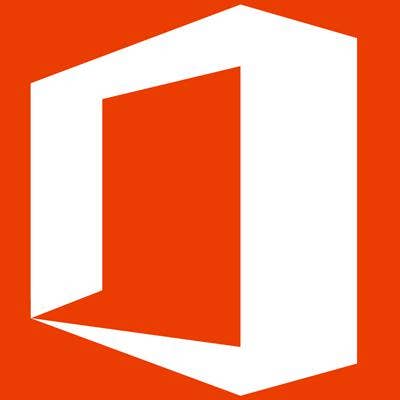
Welcome To Microsoft Office 2016
Microsoft Office 2016 suite is now officially available for home and professional users. The overhaul of Microsoft's Office includes a focus on collaboration, mobility, leveraging the cloud, and integrating real-time feedback and data into core Office applications.
With Office 2016, Microsoft brings updates to Word, Excel, PowerPoint, Publisher, Outlook, OneNote, Skype for Business, Access, Project and Visio. Beyond features, with this release of Office, Microsoft focuses on security, management and interface changes for using the office suite on multiple devices.
The Office 2016 suite is available starting today. We've been using Office 2016 for a while now. So should you take the plunge and upgrade? Read on and decide for yourself.
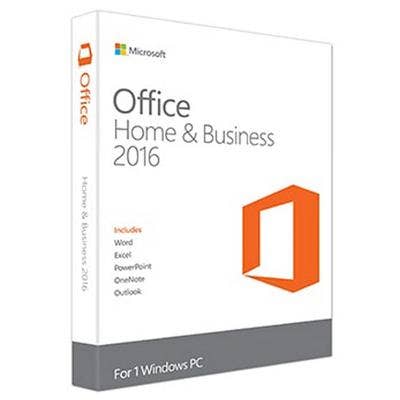
Cost
What will it cost? The stand-alone software version of Office 2016 costs $149 for Office 2016 Home & Student (Word, Excel, PowerPoint and OneNote) and $229 for Office Home & Business (added is Outlook 2016). Another option is Office 365, which runs $7 monthly for a Personal plan (with one device installation) and $10 monthly for the Home Plan (Office can be installed on five devices and five phones). Microsoft Office Professional 2016 costs $400 for one PC.

Office 365 Customers
Office 2016 is available in stores or online. If one has a subscription to Microsoft's Office 365, that application will be automatically updated in the coming weeks. Organizations with volume license agreements, including those with Software Assurance, will be able to download the new bits beginning Oct. 1.
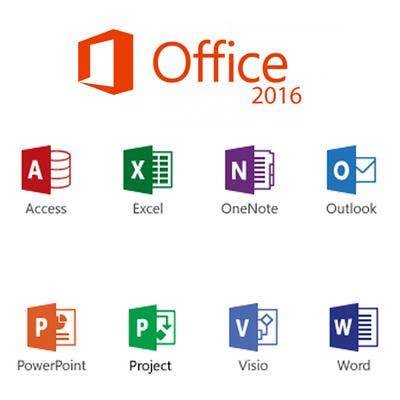
Now More Colorful
Office 2016 includes colorful new themes that more closely match Windows 10 themes, and the latest office releases for Mac, iOS and Android apps. The colorful options appear on application ribbons and include blue for Word, green for Excel and red for PowerPoint. Ribbons also are redesigned slightly to make room for the ever-present "Tell Me" search field.
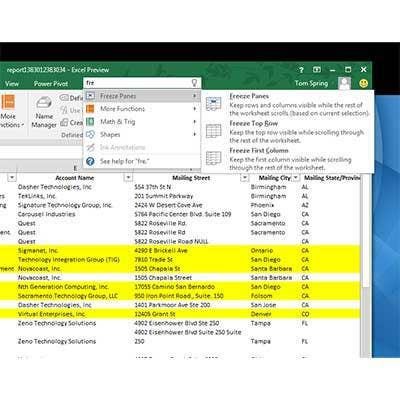
'Tell Me' Query Box Helps Users Find Answers Fast
To help users be more productive in Office 2016, Microsoft has added a Tell Me box that sits inconspicuously in the center top of the program title bars for Word, Excel and PowerPoint. Embedded in the title bar's ribbon just to the right of a lightbulb is the search field prepopulated with "Tell me what you want to do…"
If users need help trying to figure out how to project their screen to a second monitor, create graphs in Excel or put a watermark in a Word document, simply ask the Tell Me box. Just start typing in questions using natural language query, and Microsoft will narrow the answer down the best it can.
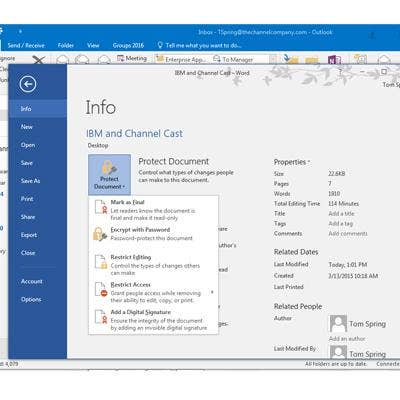
Going Backstage With Office 2016
Backstage menus are the ones that typically appear when trying to open, close, save, share or export a document. With Office 2016, for example, the Info pane offers more details about a file without requiring a user to click on it again to see all details. Additional file details that used to be hidden and require a couple of extra clicks include file creation date, last modified, last printed and size.
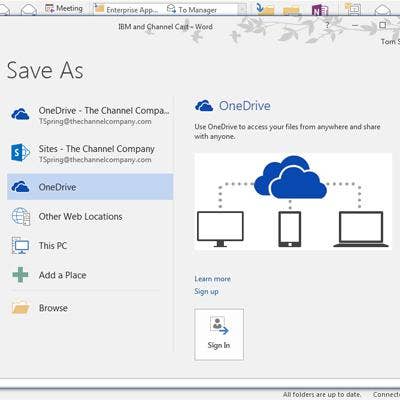
Backstage Pass: Additional Access
Office 2016 backstage access also includes shortcut access to save or open files on Microsoft's OneDrive or OneDrive for Business. The idea is, Microsoft is trying to accommodate all the different versions of Office that run on Windows, Mac, iOS and Android. Want access to the last file you edited? Just visit the backstage menu on your iPad and load it.
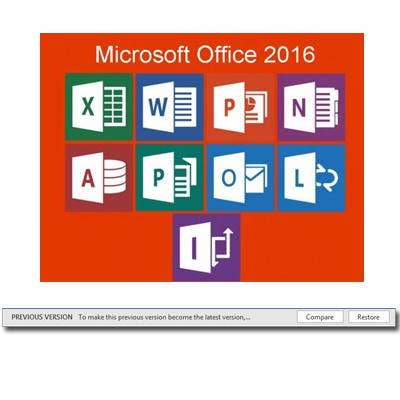
Version History Clarity
Part of Office 2016's emphasis on sharing and storing files also includes better tools for detecting version history of files. Now Microsoft makes it easy to figure out which version of a file is stored on SharePoint and on OneDrive for Business. Simply click the History command in the File menu and view the current version or choose to restore the file to an earlier version.
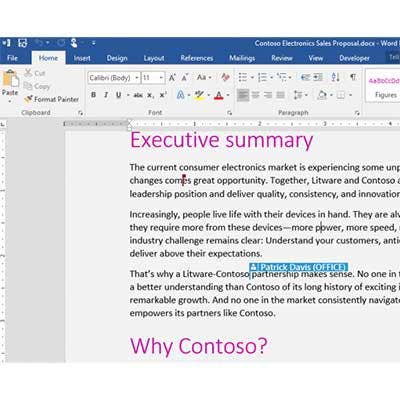
Real-Time Co-Editing In Word
Microsoft has added a feature that Google Doc users have been enjoying for years now -- real-time co-editing in Office documents. Microsoft has allowed real-time co-editing in Office Online, but says it will expand those functions to Office 2016 apps starting with Word. Microsoft said collaboration will be easier with remote teams, helping groups "stay on the same page."
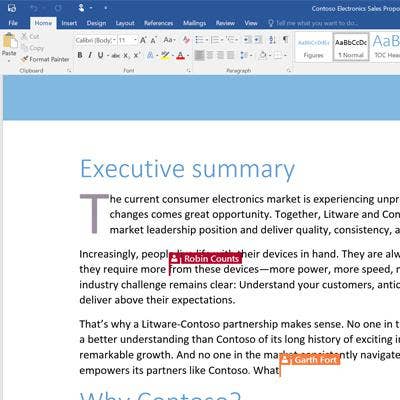
Real-Time Presence In Word
Part of collaborating in Word is actually seeing what the other person is doing -- as they are doing it. To achieve that, Microsoft has added a Real Time Presence feature that allows a user to see where in a document teammates are editing.
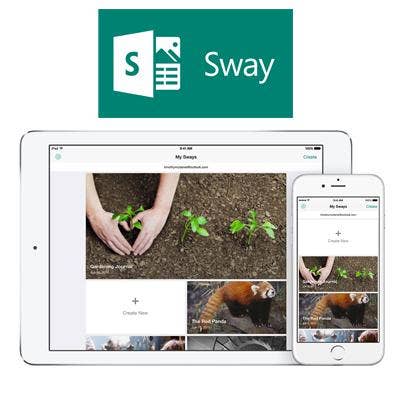
Make Way For Sway
Sway is billed as a hipper presentation app than your dad's PowerPoint. Sway lets users drag and drop photos, videos and files from YouTube, a computer, Facebook, Twitter or OneDrive onto a web browser, smartphone or tablet app. Sway lets users organize content in an engaging way to help communicate in a nonlinear (PowerPoint) manner.
Yes, Microsoft's OneNote is also an aggregation app. But Microsoft said Sway is more of a presentation app, allowing users to share finished ideas, compared with OneNote, which it said is more like the box we put ideas in before we present them.
Sway, in preview since October, will be available in Office 2016 and to business and education subscribers in Office 365 later this year.
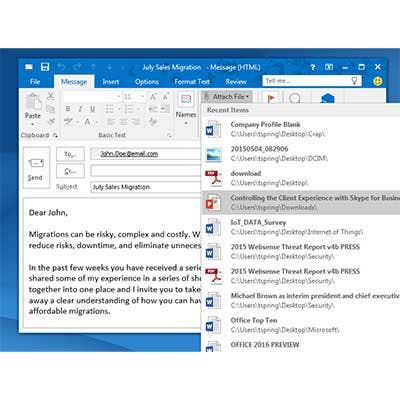
Smarter Office Menu Options
Office menus get an IQ upgrade, Microsoft said, making saving, opening and browsing for files easier. In Word, for example, the Browse option has been elevated for improved visibility and is now much easier to find. The Open and Save As tabs also have been streamlined to reduce confusion when trying to navigate where a user wants to save a file -- be it locally or in OneDrive.
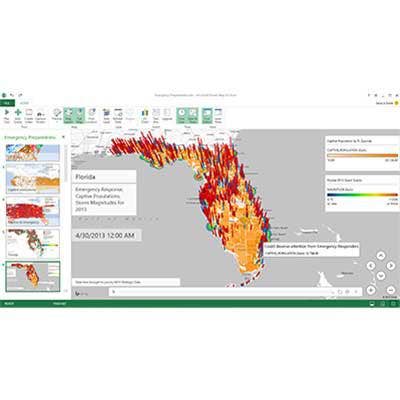
Built-In Business Intelligence
With Excel in Office 2016, Microsoft has decided to add the feature Microsoft Power Query for Excel into the core of Excel, so it no longer requires a separate download. The tool allows users to combine their own data with third-party data from within the program. That, in turn, allows for some heavy lifting when it comes to discovering, combining and refining data across a wide variety of sources.
With Power Query, one can import into Excel structured or unstructured data from public data sources, including Wikipedia tables, Microsoft Azure Marketplace and Data.gov. Then, with the built-in JSON parser, a user can create data visualizations over Big Data and Azure HDInsight.
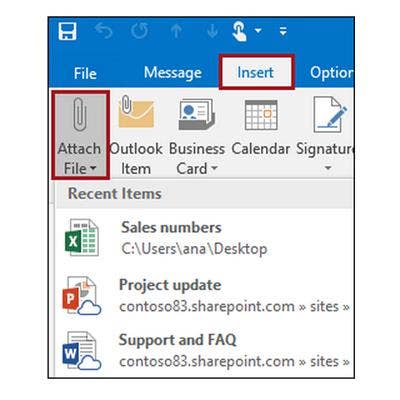
Possibly, The One Feature You'll Appreciate The Most
One menu update we appreciated was within Outlook. In Office 2016 Outlook, when a user adds an attachment to an email, the Attach File menu option now includes Recent Items, which includes any Office documents that have recently been closed. That saves the annoying step of having to Browse around for a file a user wants to share.
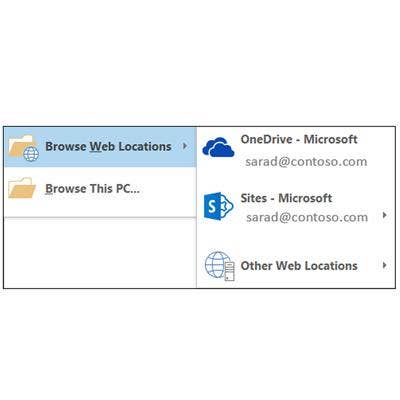
A New Take On Attachments
In order to reduce the number of times when shared documents sent to multiple recipients are editing or reviewing out-of-date files, Microsoft has added a new feature called Modern Attachments. These attachments are linked to an email via the cloud. That means when an attachment is saved or retrieved, it goes to the cloud.
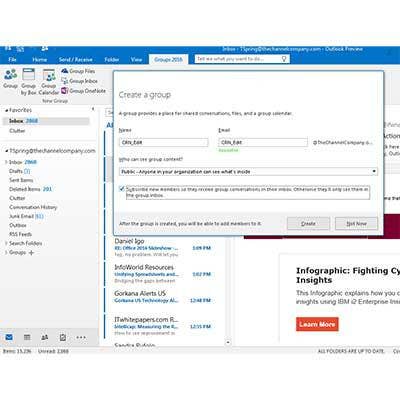
Creating Work Groups Via Outlook
In Microsoft's vision of the workplace today, teams are collaborating more via email, video, IM, and in physical and virtual meetings. To help facilitate this cooperation and collaboration, Microsoft has added 365 Groups or Outlook Desktop Groups, or Office 365 Enterprise Mailboxes.
Apparently, Microsoft hasn't decided on a final name yet. These features in the desktop version of Outlook 2016 allow users to create and manage groups. From within Outlook, users can keep tabs on group activity, access conversation history, and manage files and group notes stored on OneDrive.
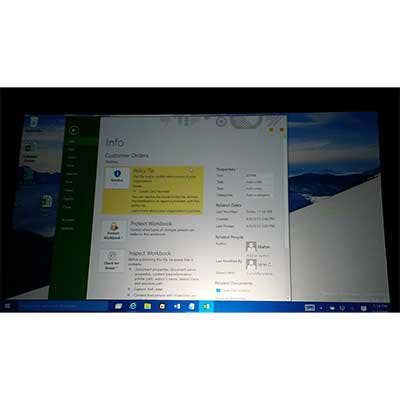
Beefing Up Security In Office 2016
Microsoft raises the bar on security in Office 2016 with tools to prevent data leakage and manage file permissions. Administrators now can enable and set Data Loss Prevention policies for Word, Excel and PowerPoint.
From the management point of view, policies can fight data leakage by allowing administrators to restrict what files can be sent to whom, and prevent data from being copied and pasted outside of Office 2016 applications.
IT administrators can place restrictions ranging from "notification" of a violation, allowing users to "override" rules with a justification, to finally "block" dissemination of content. In addition, Microsoft adds file-level encryption of Outlook, Word, Excel and other content. One also can choose to store data in a Customer Lockbox to control whether Microsoft can access sensitive information.
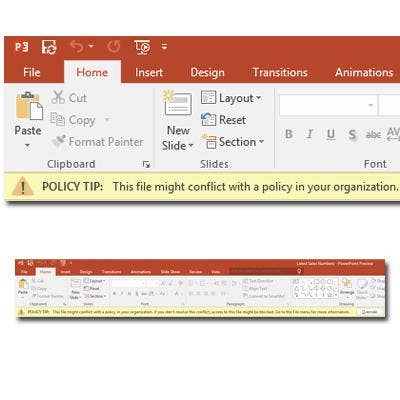
Better Security: Word
Data Loss Prevention features are extended to Outlook, Word, Excel and PowerPoint. Users will be warned directly inside an app if they try to save a file containing confidential information in a directory, folder or service where it might not be secure.
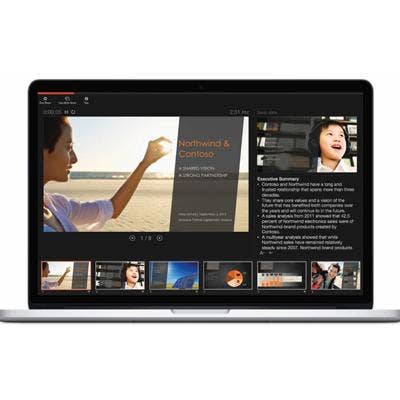
Office Updates
As with Windows 10, Microsoft has updated the way it handles updates for Office 2016 when it comes to delivering vulnerability patches, nonsecurity bug fixes, and new features and functionality.
Consumer Office 2016 must update software when it automatically arrives. For business users, Microsoft is following the same path as Windows 10 -- upgrade or else!
Microsoft will release updates for Office 365 and Office 2016 business customers at two different intervals. One will update monthly and will be the Current Branch users. The second will be Current Branch for Business, to be delivered every four months. Current Branch for Business customers can defer an update for four months, but after that they face being cut off from patches altogether.

Microsoft Adds Click-To-Run Features
Click-to-Run is an existing technology designed to reduce the time required to download, install and run Office products. But with Office 2016, Microsoft said, it has added management enhancements that IT administrators have been clamoring for, including better network traffic managment (for deploying Office in bandwidth-constrained times and offices), enhanced distribution management (tighter integration with ConfigMgr), flexible update management (for bugs, fixes and feature updates) and simplified activation management (a new Admin Portal feature for device activation).
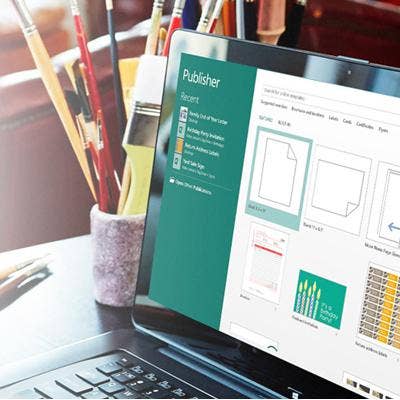
SmartArt
For users working on documents with large graphics, Microsoft has added a SmartArt feature for documents stored in the cloud. The feature allows users to open a Word, Excel or PowerPoint 2016 file sans the diagrams or images. This allows users to open and edit large files without having to download the entire document. A status bar shows how long the wait will be to download the rest of the document, if desired.
This should come in handy for anyone using Office 2016 on a bandwidth-constrained cellular wireless network.

Skype Embedded Into Word, Excel And PowerPoint
Microsoft also has more tightly integrated Skype into Office 2016. Now users can initiate Skype voice and video calls, and text-based chats directly from within an Office document.
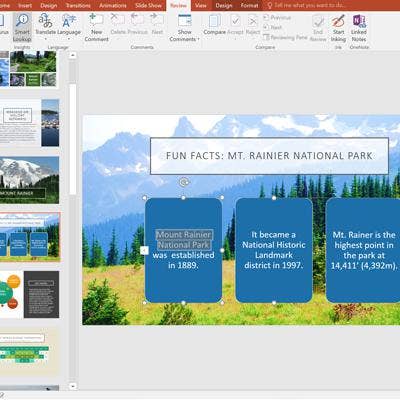
Bing-Powered Smart Lookups
Also embedded into Word, PowerPoint, Excel and Outlook is a feature called Smart Lookup. The idea is, if users need to fact-check something or do a quick web search for a word or phrase within a document, they can highlight terms in the document. Using Bing, Office 2016 will do a quick web search and allow users to view query results in a window within the document they are editing -- no flipping between the web browser and document.
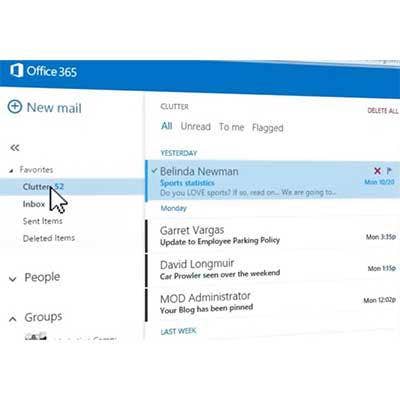
Outlook Declutters The Inbox
Office 2016 Microsoft provides some new ammo inside Outlook to fight back the landslide of email we get daily. Called Clutter, the tool moves low-priority messages out of the inbox and into a folder aptly called Clutter.
Microsoft said Clutter works over time analyzing the Outlook inbox workflow. Once it determines the messages a person is most likely to ignore, it moves them into the Clutter folder within Outlook. Once the Clutter feature is activated from within settings, the Clutter folders show up in all handheld, tablet and online versions of Outlook.
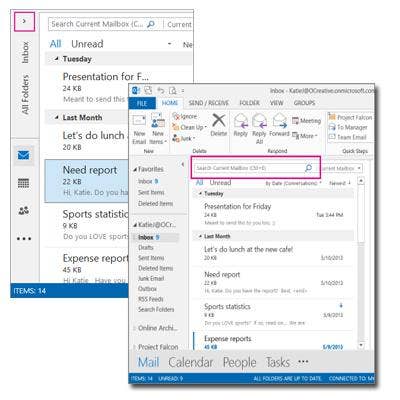
Smarter Outlook Searches
Outlook becomes more intuitive when searching the inbox in Office 2016. If Outlook sees users are searching a name, it will assume they are seeking past correspondence with them and show filtered results between the users and that individual as they type.
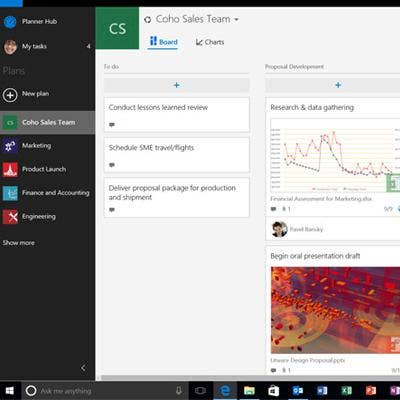
Office 2016 App
One feature that Microsoft is promising, but has not rolled out yet, is web apps. One web app, called Planner Hub, is a web-based dashboard that shows graphs of an organization's plans, projects or tasks. The tool is a project manager's dream come true, allowing individuals to get a bird's-eye view of all projects and status updates.
Each project has its own bucket or card that shows details, such as deadlines, status, who project leaders are and names of team members. Users can click on a card and drill down to see what aspects of the project are completed, in-progress or late.